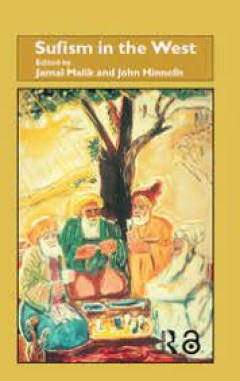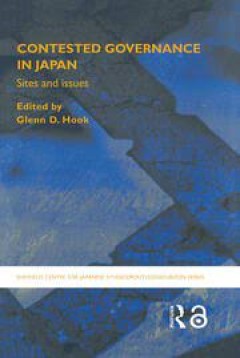Filter by

Sufism in the West
With the increasing Muslim diaspora in post-modern Western societies, Sufism – intellectually as well as sociologically – may eventually become Islam itself due to its versatile potential. Although Sufism has always provoked considerable interest in the West, no volume has so far been written which discusses this aspect of Islam in terms of how it is practised in Western societies. Bring…
- Edition
- -
- ISBN/ISSN
- 9780203087206
- Collation
- -
- Series Title
- -
- Call Number
- -

International Aid and China's Environment: Taming the Yellow Dragon
Rapid economic growth in the world's most populous nation is leading to widespread soil erosion, desertification, deforestation and the depletion of vital natural resources. The scale and severity of environmental problems in China now threaten the economic and social foundations of its modernization. Using case studies, Morton analyzes the relationship between international and local respon…
- Edition
- -
- ISBN/ISSN
- 9780203086520
- Collation
- -
- Series Title
- -
- Call Number
- -

Contested Governance in Japan: Sites and Issues
Contested Governance in Japan extends the analysis of governance in contemporary Japan by exploring both the sites and issues of governance above and below the state as well as within it. This volume discusses the contested nature of governance in Japan and the ways in which a range of actors are involved in different sites and issues of governance at home, in the region and the globe. It inclu…
- Edition
- -
- ISBN/ISSN
- 9780203015384
- Collation
- -
- Series Title
- -
- Call Number
- -

The Clean Hydrogen Economy and Saudi Arabia Domestic Developments and Intern…
This book provides a first-of-its-kind analysis of the emerging global hydrogen economy from the vantage point of one of the world’s biggest energy providers: Saudi Arabia. In 2021, and within the context of the Circular Carbon Economy framework, Saudi Arabia announced its goal to reach net-zero carbon emissions by 2060 and produce a substantial amount of clean hydrogen annually by 2030. The …
- Edition
- -
- ISBN/ISSN
- 9781003294290
- Collation
- -
- Series Title
- -
- Call Number
- -

Parliament in Ethiopia Participation, Representation and Resistance
African legislatures remain understudied, yet democratisation, development and peacebuilding all depend on these key political institutions. This book provides an in-depth analysis of Ethiopia’s parliament, a country of key political and strategic importance to the whole region. In 1931, Ethiopia’s monarchical government introduced a system of parliamentary democracy with seemingly contr…
- Edition
- -
- ISBN/ISSN
- 9781003293163
- Collation
- -
- Series Title
- -
- Call Number
- -

The Philosophy of Desire in the Buddhist Pali Canon
David Webster explores the notion of desire as found in the Buddhist Pali Canon. Beginning by addressing the idea of a 'paradox of desire', whereby we must desire to end desire, the varieties of desire that are articulated in the Pali texts are examined. A range of views of desire, as found in Western thought, are presented as well as Hindu and Jain approaches. An exploration of the concept of …
- Edition
- 1st Edition
- ISBN/ISSN
- 9780203010570
- Collation
- -
- Series Title
- -
- Call Number
- -

Museums for Peace
Museums for Peace: In Search of History, Memory and Change highlights the inspiring as well as conflicting representations and purposes of diverse museums for peace around the world. Coming from various cultural and professional backgrounds, the authors explore “what are museums for peace and what do they mean?” Some chapters introduce alternative histories of peace, conflict, and memori…
- Edition
- -
- ISBN/ISSN
- 9781003290896
- Collation
- -
- Series Title
- -
- Call Number
- -

Nigeria's Third-Generation Literature
This book considers the evolution and characteristics of Nigeria’s third-generation literature, which emerged between the late 1980s and the early 1990s and is marked by expressive modes and concerns distinctly different from those of the preceding era. The creative writing of this period reflects new sensibilities and anxieties about Nigeria’s changing fortunes in the post-colonial era.…
- Edition
- -
- ISBN/ISSN
- 9781003290186
- Collation
- -
- Series Title
- -
- Call Number
- -

Justice and the Meritocratic State
Like American politics, the academic debate over justice is polarized, with almost all theories of justice falling within one of two traditions: egalitarianism and libertarianism. This book provides an alternative to the partisan standoff by focusing not on equality or liberty, but on the idea that we should give people the things that they deserve. Mulligan sets forth a theory of economic …
- Edition
- -
- ISBN/ISSN
- 9781315270005
- Collation
- -
- Series Title
- -
- Call Number
- -

Communities and Museums in the 21st Century
Communities and Museums in the 21st Century brings together innovative, multidisciplinary perspectives on contemporary museology and participatory museum practice that contribute to wider debates on museum communities, heritage, and sustainability. Set within the context of globalisation and decolonisation, this book draws upon bi-regional research that will enrich our understanding of the c…
- Edition
- -
- ISBN/ISSN
- 9781003288138
- Collation
- -
- Series Title
- -
- Call Number
- -
 Computer Science, Information & General Works
Computer Science, Information & General Works  Philosophy & Psychology
Philosophy & Psychology  Religion
Religion  Social Sciences
Social Sciences  Language
Language  Pure Science
Pure Science  Applied Sciences
Applied Sciences  Art & Recreation
Art & Recreation  Literature
Literature  History & Geography
History & Geography